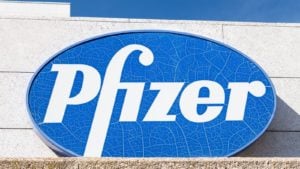In general, blue-chip stocks have a low beta and offer regular cash inflow through dividends. At the same time, these stocks offer steady returns. A broad indication of my view comes from the fact that the S&P 500 index has delivered total returns at a CAGR of 13% in the last 10 years. An investor holding S&P 500 index stocks would have, therefore, delivered positive returns when adjusted for inflation.
The focus of this column is on seven low-beta stocks that trade at attractive valuations. Further, these stocks offer a healthy dividend yield. Considering the valuation, I would expect stellar total returns from these high-yield dividend stocks in the next five years.
Rio Tinto (RIO)

Rio Tinto (NYSE:RIO) has a beta (5Y monthly) of 0.63 and looks undervalued at a forward P/E of 10. Further, RIO stock offers a dividend yield of 6.14%, and with robust cash flows, I believe that dividends are sustainable.
To put things into perspective, Rio has reported an average annual free cash flow of $10 billion in the last five years. That has translated into robust dividends and a strong balance sheet. Rio Tinto expects to incur annual capital expenditure of approximately $7 billion annually. That will likely be financed through internal cash flows. Therefore, credit metrics will remain strong.
I must add here that the iron ore business remains the cash flow machine for Rio. However, the company is investing in metals that will support a global energy transition. That includes aluminum, copper, lithium and other minerals. These investments will create value in the long term as Rio is more diversified in terms of growth drivers.
AT&T (T)

AT&T (NYSE:T) is another low-beta stock that trades at a valuation gap. T stock trades at a forward P/E of 7.8 and offers a dividend yield of 6.43%. In the last six months, T stock has been marginally higher. However, considering the valuations and financial metrics, I am bullish on a strong rally.
If we look at the company’s Q1 2024 results, there are multiple positives. First, AT&T has guided for free cash flow of $17 to $18 billion for the year. Strong FCF will ensure that dividends sustain. Additionally, AT&T is on track to meet its leverage guidance of 2.5x by the first half of 2025.
The second point to note is that AT&T continues to add wireline and wireless subscribers. Further, the average revenue per user has been trending higher. Both these factors point to potential EBITDA margin expansion and cash flow upside. As credit health improves coupled with steady growth, I expect T stock to rally.
Pfizer (PFE)

Pfizer (NYSE:PFE) stock has been in a sharp downtrend as the markets discount earnings readjustment in a post-COVID world. Further, drugs going off-patent have impacted growth visibility. It, however, seems clear that the selling is overdone. My view is underscored by the point that PFE stock has remained sideways for year-to-date. I expect a rally after some consolidation for this 5.94% dividend yield stock.
An important point to note is that Pfizer has a deep pipeline of new molecular entities. With an attractive late-stage pipeline, there is visibility for revenue growth as new drugs hit the market. In 2023, Pfizer received a “record number of nine new molecular entity approvals by the U.S. Food and Drug Administration.”
In addition to significant investments in research and development, Pfizer has pursued acquisitions. That is another growth catalyst for the long term. In December 2023, the company completed the acquisition of Seagen. That will help Pfizer make significant inroads in the oncology business. Therefore, Pfizer is setting the stage for the next phase of growth, and it’s a good time to accumulate PFE stock.
Altria Group (MO)

In the last five years, Altria (NYSE:MO) stock has been sideways. MO stock trades at a forward P/E of 9 and offers a robust dividend yield of 8.62%. Therefore, the yield has been good enough to deliver returns that are positive when adjusted for inflation.
Further, after an extended time correction, it’s likely the stock will break out on the upside. That view is underscored by positive business developments. It’s important to note that Altria has been focused on business transformation. The company’s smokable segment remains the cash flow driver.
However, Altria is increasingly investing in the non-smokable business. Over the next five years, the new segment will have a positive impact on growth.
Talking about the business transformation, the company’s NJOY device reported a market share of 11.5% in the U.S. for Q1 2024. On a quarter-on-quarter basis, the market share increased by 240 basis points. Similarly, Altria has gained market share in the oral tobacco segment. With these positives, I believe MO stock will compensate for the time correction in the next few years.
Vale (VALE)

Vale (NYSE:VALE) is an industrial commodity company where the business is cyclical. However, VALE stock has a beta of less than one. Further, it’s among the most undervalued blue-chip stocks and trades at a forward P/E of 5.6. With a dividend yield of 9.3%, the stock is a steal at current levels.
It’s worth noting that iron ore recently trended higher after China’s property sector stimulus. With potential rate cuts in the coming quarters, I am bullish on industrial commodities. It’s, therefore, a good time to accumulate VALE stock.
Vale is also in recovery mode in terms of production. For Q1 2024, the company reported its highest quarterly iron ore production since 2019. Additionally, the company reported 22% year-on-year growth in copper production to 82kt. The nickel business also reported improved productivity. With the possibility of commodities trending higher, Vale will likely report healthy EBITDA and cash flows.
Flex LNG (FLNG)

Flex LNG (NYSE:FLNG) stock might not be among the blue-chip names. However, the company has strong fundamentals and clear revenue visibility. FLNG stock beta is, therefore, surprisingly low at 0.68. It’s also worth noting that FLNG stock trades at an attractive forward P/E of 12.4 and offers a dividend yield of 10.38%.
As an overview, Flex LNG is engaged in the transportation of liquified natural gas globally. Currently, the company has a fleet of 13 LNG carriers. It’s important to note that these vessels have a combined contracted backlog of 50 years. With potential charter extensions, the combined backlog can extend to 69 years. Therefore, clear revenue and cash flow visibility ensure steady dividends.
An important point to note is that time charter rates have been strong and have ensured healthy EBITDA. A “third wave of LNG is coming on stream from [the] end of 2025 onwards,” and the outlook for the industry is positive. Further, the “scrapping of older steam tonnage” will also likely improve market fundamentals. Therefore, as time charter rates remain attractive, FLNG stock is poised for a breakout.
Aker BP ASA (AKRBF)

Aker BP ASA (OTCMKTS:AKRBF) has a beta that’s at 1.15. I am, however, tempted to talk about this stock for multiple reasons. First, AKRBF stock is undervalued and offers a dividend yield of 9.96%.
Further, Aker BP ASA is a Norwegian Continental Shelf-focused oil & gas exploration company with high-quality assets. As of 2023, Aker reported 2P reserves of 1.72 billion barrels of oil equivalent and 2C resources of 810 million BOE. The assets have an attractive break-even of $35 to $40 per barrel. That ensures Aker BP delivers healthy cash flows consistently.
Aker BP is also a potential blue chip in the making. The company already has an investment-grade balance sheet. As of Q1 2024, Aker BP reported a leverage ratio of 0.2. Further, the company had a liquidity buffer of $6.6 billion. That provides high financial flexibility for organic and acquisition-driven growth. I must add here that robust operating cash flows will ensure dividends sustain and Aker continues to pursue aggressive investments.
On the date of publication, Faisal Humayun did not hold (either directly or indirectly) any positions in the securities mentioned in this article. The opinions expressed in this article are those of the writer, subject to the InvestorPlace.com Publishing Guidelines.
Faisal Humayun is a senior research analyst with 12 years of industry experience in the field of credit research, equity research and financial modeling. Faisal has authored over 1,500 stock specific articles with focus on the technology, energy and commodities sector.
